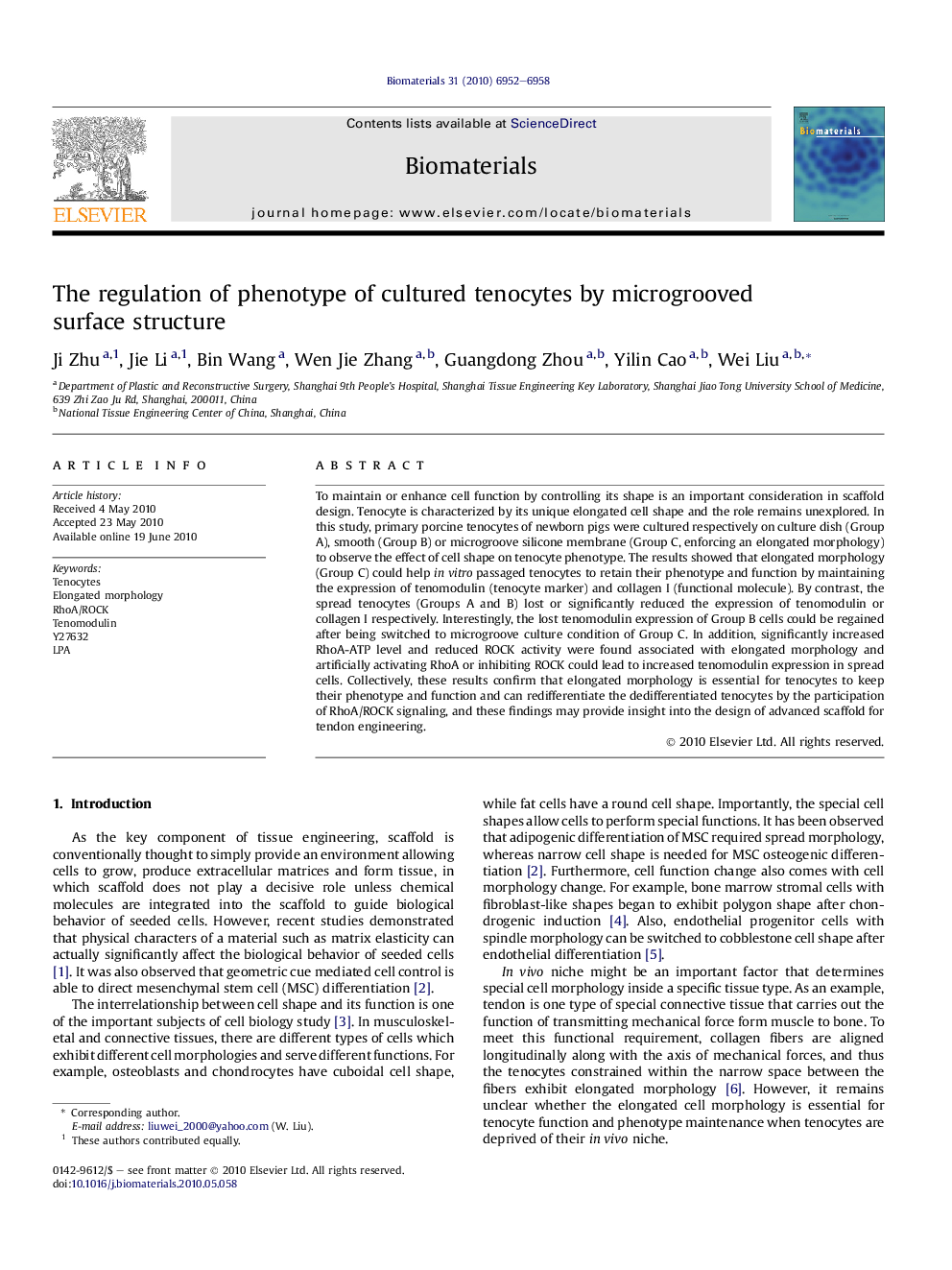| Article ID | Journal | Published Year | Pages | File Type |
|---|---|---|---|---|
| 8339 | Biomaterials | 2010 | 7 Pages |
To maintain or enhance cell function by controlling its shape is an important consideration in scaffold design. Tenocyte is characterized by its unique elongated cell shape and the role remains unexplored. In this study, primary porcine tenocytes of newborn pigs were cultured respectively on culture dish (Group A), smooth (Group B) or microgroove silicone membrane (Group C, enforcing an elongated morphology) to observe the effect of cell shape on tenocyte phenotype. The results showed that elongated morphology (Group C) could help in vitro passaged tenocytes to retain their phenotype and function by maintaining the expression of tenomodulin (tenocyte marker) and collagen I (functional molecule). By contrast, the spread tenocytes (Groups A and B) lost or significantly reduced the expression of tenomodulin or collagen I respectively. Interestingly, the lost tenomodulin expression of Group B cells could be regained after being switched to microgroove culture condition of Group C. In addition, significantly increased RhoA-ATP level and reduced ROCK activity were found associated with elongated morphology and artificially activating RhoA or inhibiting ROCK could lead to increased tenomodulin expression in spread cells. Collectively, these results confirm that elongated morphology is essential for tenocytes to keep their phenotype and function and can redifferentiate the dedifferentiated tenocytes by the participation of RhoA/ROCK signaling, and these findings may provide insight into the design of advanced scaffold for tendon engineering.
